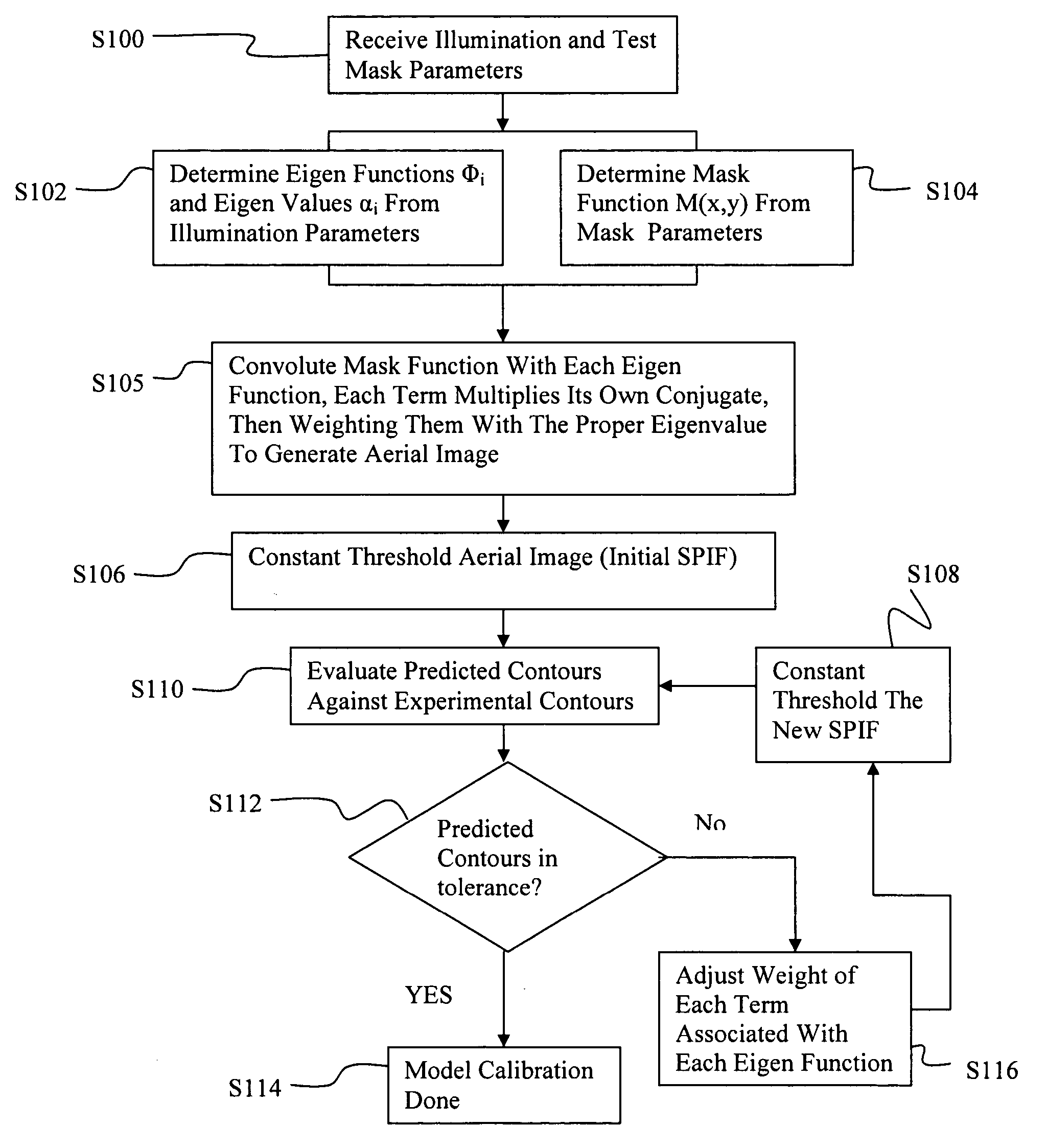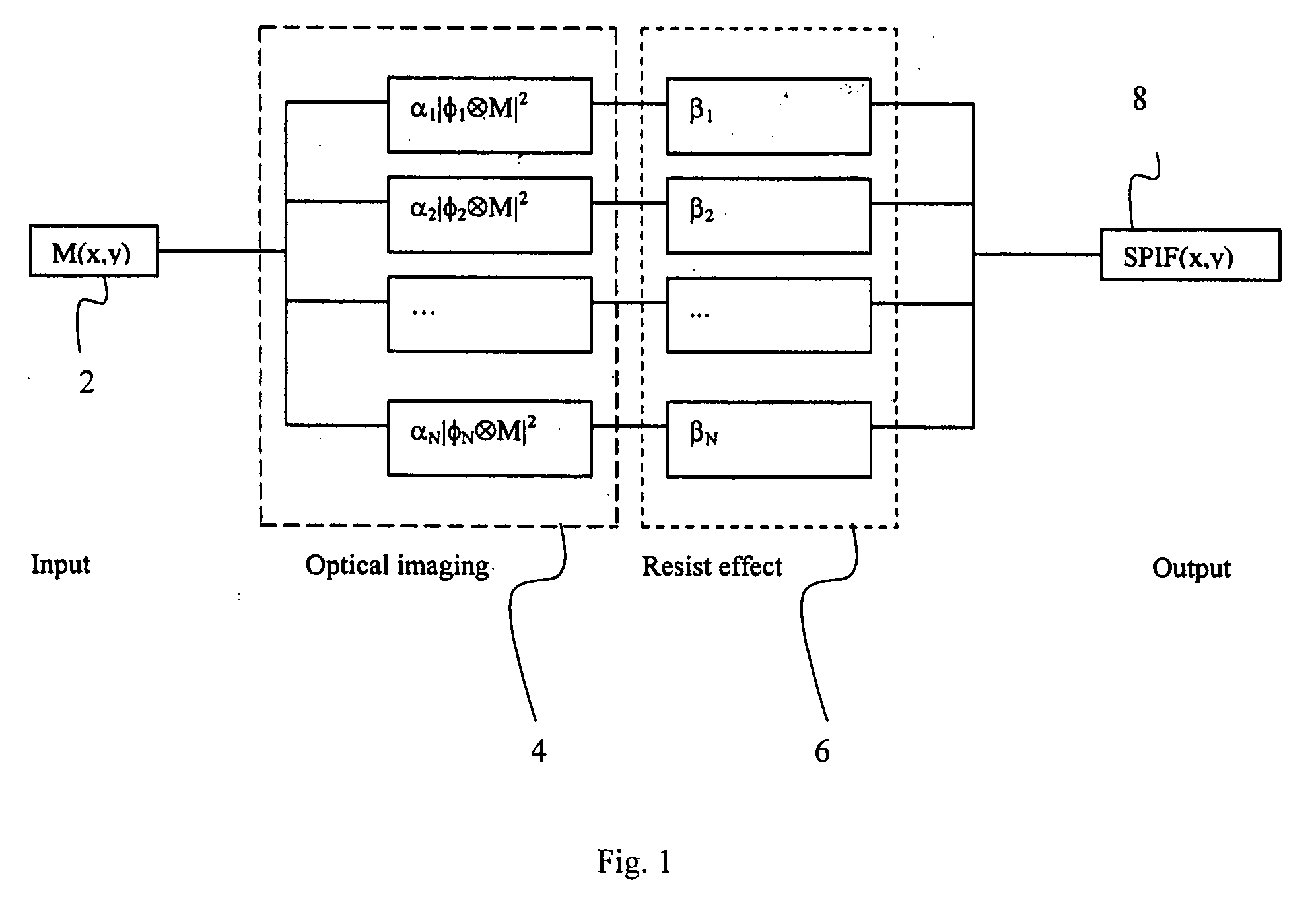Eigen decomposition based OPC model
a decomposition and opc model technology, applied in the field of eigen decomposition based opc model, can solve the problems of significant deterioration in image quality and photolithography process robutstness, the cd resolution limit of the optical exposure tool, and the size of the integrated circuit is reduced, so as to achieve the effect of minimal human intervention
- Summary
- Abstract
- Description
- Claims
- Application Information
AI Technical Summary
Benefits of technology
Problems solved by technology
Method used
Image
Examples
Embodiment Construction
[0051] Disclosed is a method and system for model OPC that is based on eigen function decomposition (termed as Eigen Decomposition Model, or EDM). In the present invention, a partially coherent imaging system is preferably decomposed into a series of coherent imaging systems. The series of coherent imaging systems provide an effective and accurate way to describe the aerial image intensity distribution around a point of interest (x, y), which may be used to design an improved mask to improve the resolution of the desired image features in the photolithography process. For a precision model OPC on the mask pattern, we must ensure the illumination impact is well accounted for. For a tractable model OPC application, the present invention utilizes an eigen function decomposition approach to optimally approximate a partial coherence imaging system. The optimal approximation is used to generate a model which may be used to generate a SPIF function for each mask, which may be used by a com...
PUM
| Property | Measurement | Unit |
|---|---|---|
| exposure wavelength | aaaaa | aaaaa |
| wavelength | aaaaa | aaaaa |
| wavelength | aaaaa | aaaaa |
Abstract
Description
Claims
Application Information
 Login to View More
Login to View More - R&D
- Intellectual Property
- Life Sciences
- Materials
- Tech Scout
- Unparalleled Data Quality
- Higher Quality Content
- 60% Fewer Hallucinations
Browse by: Latest US Patents, China's latest patents, Technical Efficacy Thesaurus, Application Domain, Technology Topic, Popular Technical Reports.
© 2025 PatSnap. All rights reserved.Legal|Privacy policy|Modern Slavery Act Transparency Statement|Sitemap|About US| Contact US: help@patsnap.com



